Baby, it’s Cold Inside: The Scoop on Commercial Ice Machines
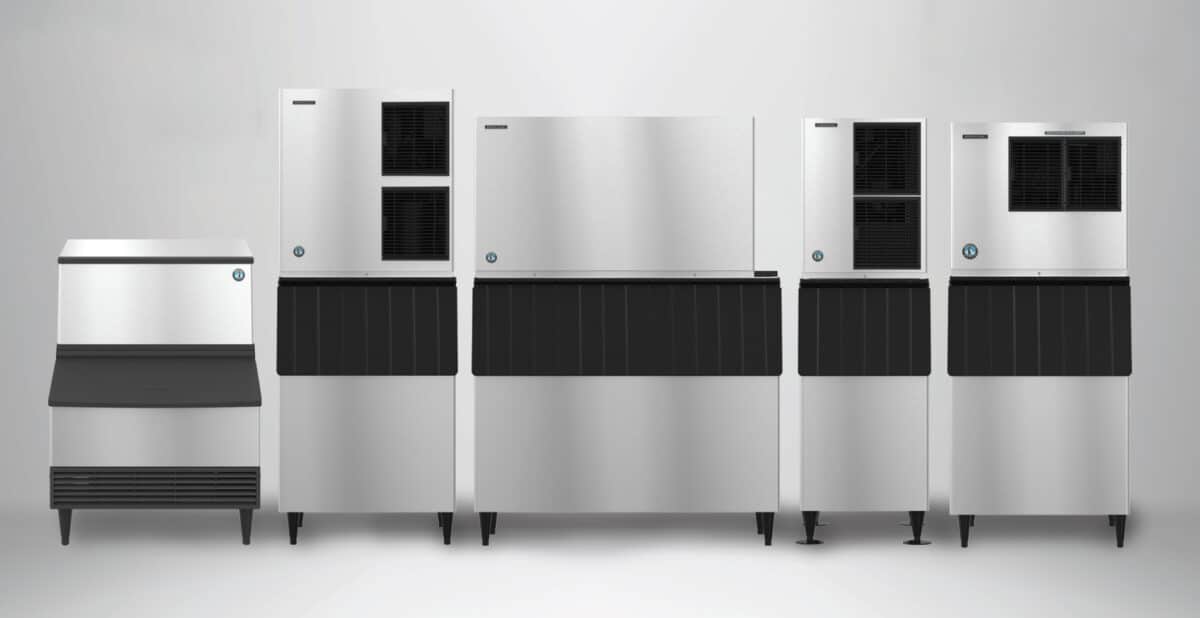
Whether you’re cranking out cocktails or serving up sodas in your eatery, one thing’s for sure: an ice machine can make or break your bottom line.
If your business has cold drinks, you’ll need an ice maker. There’s much to consider when you’re in the market for a commercial ice maker. You need one with the capacity to meet your demands and produce the best type of ice cubes for your purposes.
Let’s get to the cold hard facts so you can pick the right ice machine – one that’ll have your guests saying, “This is the coolest place in town!”
Defining Ice Maker Types
The type of ice maker you choose is like picking the right hot rod for a road trip – it’s got to fit your style and needs. How do you figure out the best commercial ice machine for you? Don’t worry, we have all the details you need to buy a commercial ice machine that perfectly fits your needs.


The Granddaddy of Ice Machines: Modular (Standing)
These bad boys are the heavy lifters of the ice world. Modular ice makers are your go-to when you need a snowstorm of ice. They pair up with various dispensers and bins for maximum flexibility. Perfect for high-volume joints looking to quench some serious thirst!
Modular units, aka ice machine heads, are self-contained ice makers that continuously crank out large amounts of ice for businesses serving up drinks all day long. For convenience stores, foodservice establishments, healthcare facilities, and other businesses that can’t afford an ice shortage, a modular ice machine might be the best commercial ice maker choice.
The freestanding units come in one of three sizes: 22″ wide, 30″ wide, or 48″ wide, so available space should influence your decision. Modular ice makers are designed to stack up with compatible modular components such as ice machine bins or soft drink and water dispensers.
Wondering how much ice these major machines can handle? Depending on size, they produce 200 lbs. to 1,900 lbs. per day, and the ice bin holds about 12 hours’ worth of ice output.
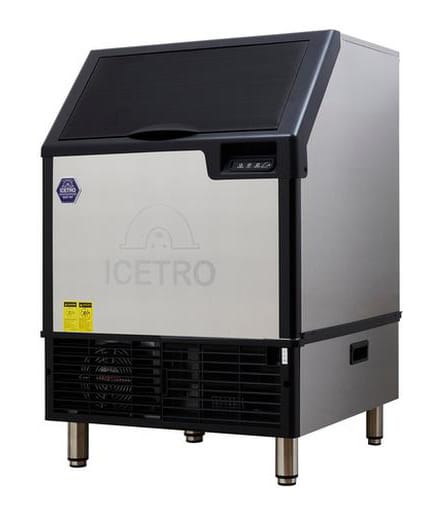
Bar Superstars: Undercounter Ice Makers
A bit more compact but still cool as can be, undercounter ice machines pack a punch without playing tower defense in your workspace. If you’ve got a small bar or a private dining area that needs a steady ice flow, set your sights on these.
These ice makers fit under a standard 40″ high countertop, have a built-in bin, and produce about 350 pounds of ice daily.
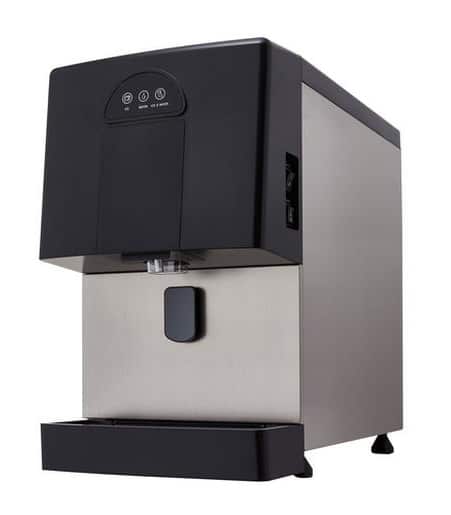
Mini but Mighty: Countertop Ice Makers
Small but mighty, countertop ice makers are the ninjas of ice production. Ideal for healthcare spots or offices where space is at a premium, these compact chillers often double as water dispensers and can produce up to 400 pounds of ice daily. Talk about a hydration station!
The Cold, Cold Heart: Ice Maker Condenser Types
Choosing a condenser type is critical—it’s like deciding whether to grill with gas or charcoal. Each one has its own vibe. Since the type of condenser affects purchase and operation costs, when you’re wondering how to buy a commercial ice machine, you need to think about the condenser that makes the most sense for your business.
Air Cooled Condenser
The most common cats in the alley, air-cooled condensers are wallet-friendly and easy to install. Great for high-volume spots with plenty of room to breathe.
Pros:
- Cost: Least expensive option.
- Capacity: Can support ice makers producing up to 1,900 pounds of ice daily.
- Energy-efficient: Simplest and most energy-efficient condenser model.
Cons:
- Extra Space: They need 6” minimum clearance around their air intake and discharge.
- Ventilation: They require plenty of ventilation because they blow out hot air.
- Noise: Exhaust fans tend to be noisier than a liquid cooling system.
Water Cooled Condenser
If you’re cooking up a storm in a hot, steamy kitchen, water-cooled condensers can keep the heat from messing with your ice flow. However, keep an eye on water usage – we want to keep it cool with Mother Nature, too!
Pros:
- Less ventilation needed: This is a great option for businesses with limited ventilation and space.
- Less surrounding heat: Generates less heat around the machine.
- Less maintenance required: Water-cooled ice makers require less maintenance than air-cooled models.
Cons:
- Water cooling: Higher water bills and more water waste.
- Plumbing needs: Most commercial buildings lack recirculating water systems.
- Water usage: Water-cooled ice makers are not a great choice in areas where water shortages are a problem.
Remote Condenser
When you want to keep the noise down and the heat out, a remote condenser is your ace in the hole. It’s installed away from the machine, usually outside, keeping the indoor vibes chill.
Pros:
- Quiet: Because the condenser is outside, your kitchen stays quieter.
- Space-saver: Less space is needed inside.
- Generates less heat: Keep that ambient air temperature down in kitchens with limited ventilation and low-ceiling buildings where heat can accumulate.
Cons:
- Less efficient in a hot climate: Heat makes the unit work harder, which means higher energy consumption. You may need a larger machine to produce the same amount of ice in hot regions.
- More difficult to install: The need to connect coolant lines from outside to inside makes these units more difficult to install and move if necessary.
Complex maintenance: with refrigeration lines running through the wall and components inside and outside, maintenance can be a challenge.
Freeze Frame on Ice Cube Types
Choosing the right cube is like plating food – it’s all about preference and presentation.

Full Cube
Slow melting and classic, full cubes rock the glass in soft drinks and cocktails alike. They’re a solid choice for keeping drinks cool in any casual or upscale establishment. These are the longest-lasting ice cubes – they’re slow-melting, perfect for on-the-rocks drinks with premium liquor.
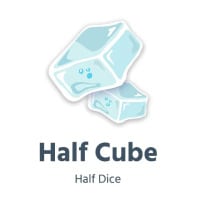
Half Cube
Smaller than full cubes, half cubes of ice are all about versatility. Quick chill and a perfect fit for blenders, you’ll find half cubes doing’ their dance in many a glass. These cubes do melt quicker than full cubes, so avoid use in any premium drinks. However, they’re standard for commercial iced beverages like sodas and iced coffees.
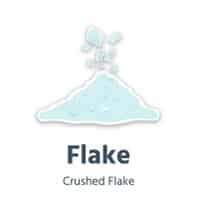
Flake
Soft and snow-like, flake ice is the secret ingredient for seafood and produce displays. Keeping everything fresh and frosty without bruising the goods. You might see it in snow cones, slushies, or other treats where ice is the star of the show. Flake ice is excellent for blending but not so great in drinks. If your establishment has displays for cold food like fresh fruit or dairy (think yogurt or milk), this is the ice for you!

Crescent
Moon-shaped and unique, crescent ice has got it going on for splash-free serving. Picture a crystal-clear glass of iced tea without spilling’ a drop. This type of ice is very hard, so it’s not ideal for blended beverages. You’ll typically see crescent ice in the same uses as full ice cubes, as they are both slow-melting and great at cooling beverages without watering down the drink.
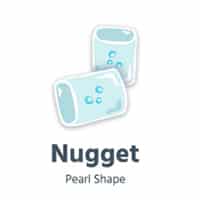
Nugget
Also known as pellet ice, these chewable chunks are a fan favorite. Usually spotted at the soda fountain, nugget ice cubes jazz up a casual sipper without diluting the flavor. Nugget ice is one of the most popular commercial ice types – seen in fast food establishments, healthcare and hospitals, and your local gas station. Because of the popularity, you may want to size up on the capacity of the ice maker to meet the demand.
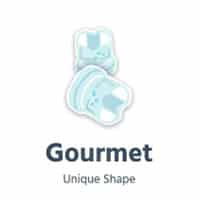
Gourmet
Think of these as the diamonds of the ice world. They’re all about upscale presentations – perfect for that single malt or high-end cocktail that deserves a little extra. Gourmet ice cubes are another slow-melting ice, so you only need a few cubes for the perfect presentation. Top hat ice cubes are another similar gourmet-style ice.
Cold as Ice: Production & Size Considerations
Let’s get real – size matters, but so does output. It helps to know how much ice you’ll need every day. How much ice you need depends on variables unique to your business, like the number of customers and how many drinks you typically serve.
Cube Production:
It’s a balancing act between how much ice you can store and how much you need to churn out for a bustling crowd. There are massive variations in ice maker and ice bin sizes, from compact undercounter models to huge modular ice machines big enough to store a side of beef (don’t do that).
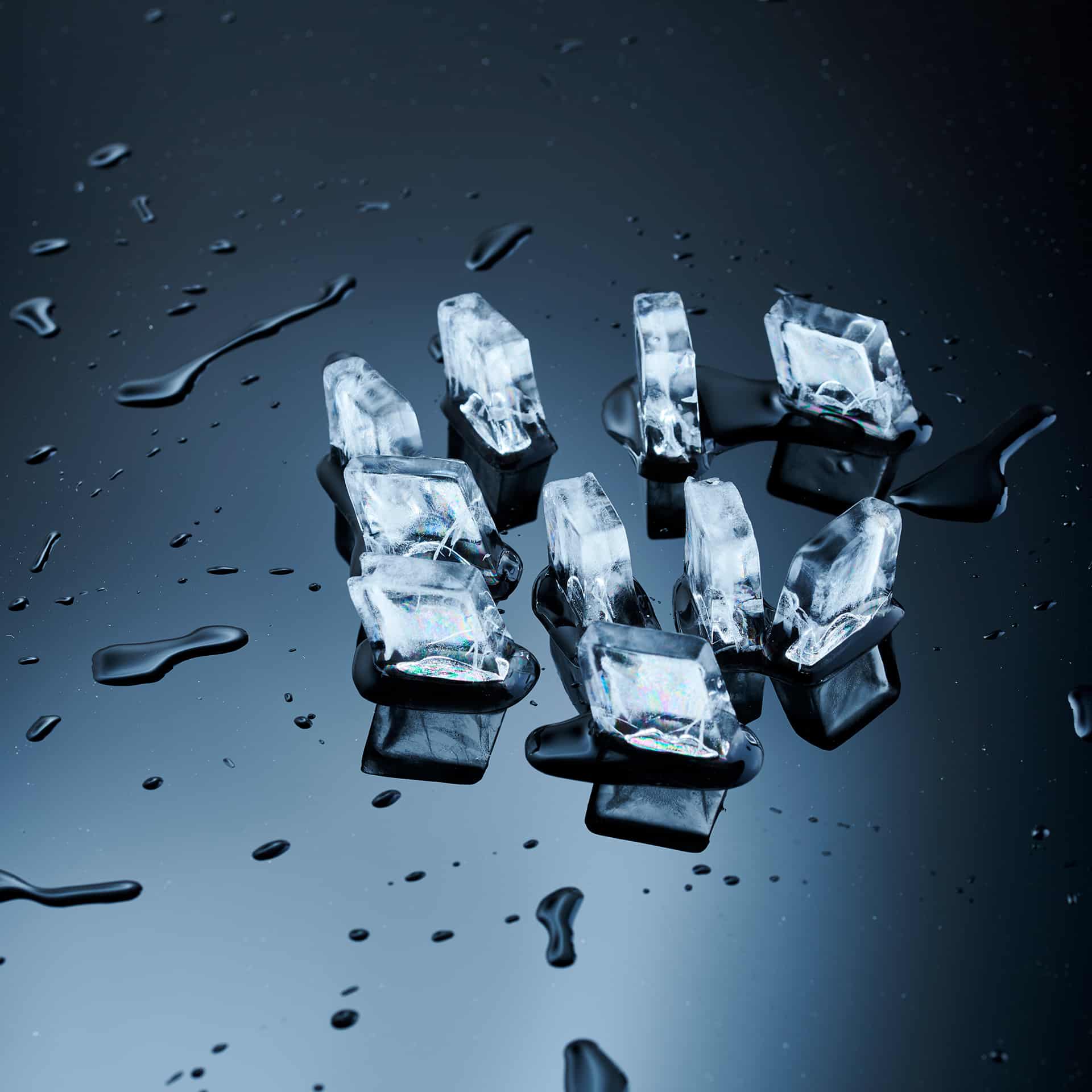

Size:
Your available space is an important consideration. You have to measure twice and install once. From stand-alone to slidin’ under the counter, there’s a size for every spot – just make sure it fits like your favorite pair of shades.
Bin vs. No Bin
Some ice makers come with built-in storage, while others need a separate bin to catch the cold stuff. Typically, undercounter models have built-in ice bins, countertop models usually don’t, and modular ice makers may or may not, based on the model. Choose based on your space and usage, and you’ll be golden.
Here are a few finer points about ice bin size to think about:
- Bigger is not always better: If you choose an ice bin bigger than you need, you’ll have to throw out excess ice, which means losing money on labor and costs. It also presents a cleaning challenge. While it is tempting to keep adding new ice on top of old ice, not completely cleaning the bin often results in bacteria growth.
- Keep track of your ice usage: When the time comes to replace your ice machine, you’ll have a more accurate idea of the best option for bin size.
- Size is not relative: The storage bin you choose doesn’t have to match your machine’s capacity. Most businesses have peak and slack times, so you can fill the bin during slow times to prepare for peak hours.

Other Commercial Ice Machines & Accessories for a Tenth Avenue Freeze-Out
From combo ice-and-water machines to bins and even remote components that boost your ice-making game, there’s an arsenal of tools to ensure you never run dry. Fully load your ice machine with the following:
- Water filtration
- Water and soft drink dispensers
- Feet for adjustable height
- Scoop and scoop holder
- Ice dispensers
- Bigger ice bin
- Ice machine pumps
Adding accessories will supercharge your system for more efficient, cleaner operation.
In addition to accessories, you’ll need to know how to clean a commercial ice maker. Start by investing in ice machine cleaners and disinfectants. Here’s how to clean a commercial ice machine in 8 steps:
- Turn off the ice machine.
- Empty the ice bin.
- Clean the interior components, including the ice bin, ice scoop or dispenser, and all accessible surfaces with warm, soapy water and non-scratch cloths or brushes.
- After rinsing with clean water, use a food-safe sanitizer approved by the manufacturer or health department to disinfect all interior surfaces.
- Clean dust and dirt off the condenser coils using a vacuum cleaner or brush. A good dusting will keep the motor running efficiently.
- Replace air and water filters on schedule and when you see changes in the ice quality.
- Remove any removable parts like the water distribution system and clean.
- Flush out the water system with a water and vinegar mixture or a descaling solution, following the manufacturer’s guidelines.
Take proper precautions to protect yourself while working with contaminants and chemicals. Don gloves and goggles before getting started.

Deciding Whether to Purchase or Lease Can Make You Stone Cold Crazy
You may wonder if you should dip your toes or go all in. Whether you want to lease or lay down the cash to buy, weigh the pros and cons against your budget. Sometimes, short-term play can lead to long-term success.
If you’re interested in purchasing, you’re probably asking, “So, how much does a commercial ice maker cost?” The simplest answer is the more ice it churns out, the more expensive it will be.
Other factors that influence purchase price include what we’ve mentioned above:
- Type of ice maker
- Condenser type
- Ice type
- Ice production
- Capacity of an ice bin
When you’re factoring how much a commercial ice machine costs, remember that some models also require specialized installation and water lines, and there are ongoing costs for regular maintenance and water supply. And don’t forget to add in the cost of components, like ice bins and soft drink dispensers.

At Eleven36, we’ll help you find the perfect chill factor to lease or buy. We’ll talk you through buying a commercial ice machine that meets your needs or help you decide whether leasing is the best option. Whether you’re serving nonstop drinks in a busy bar or dropping self-service cubes at a school lunch counter, we have the right size and capacity to fit your space and meet your needs.
So, there you have it, the complete dish on commercial ice machines. Remember, the right ice can turn a basic beverage into a masterpiece, and getting there is all about making the right call on your equipment. Keep it cool, keep it crafty, and keep those happy customers coming back for more.
